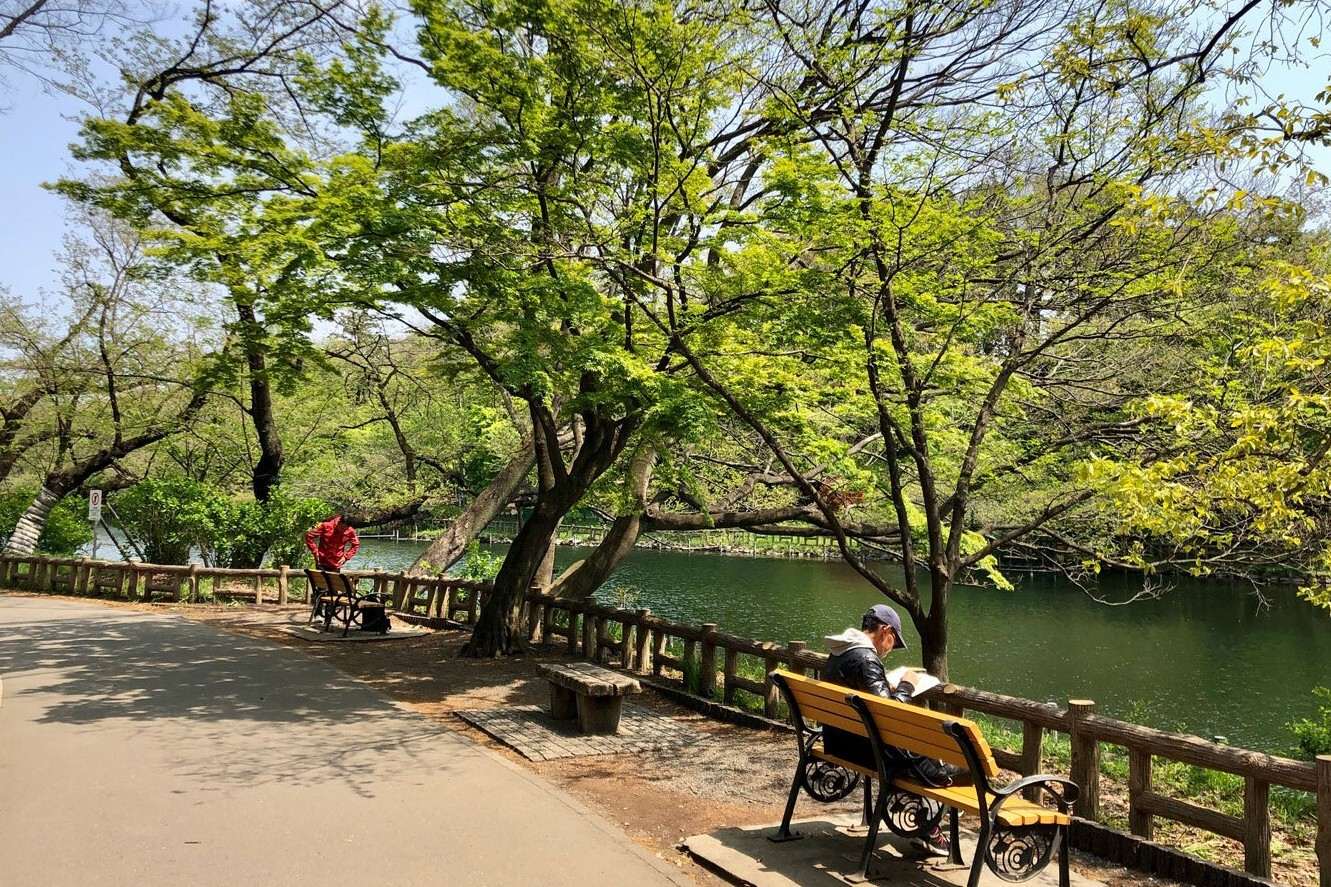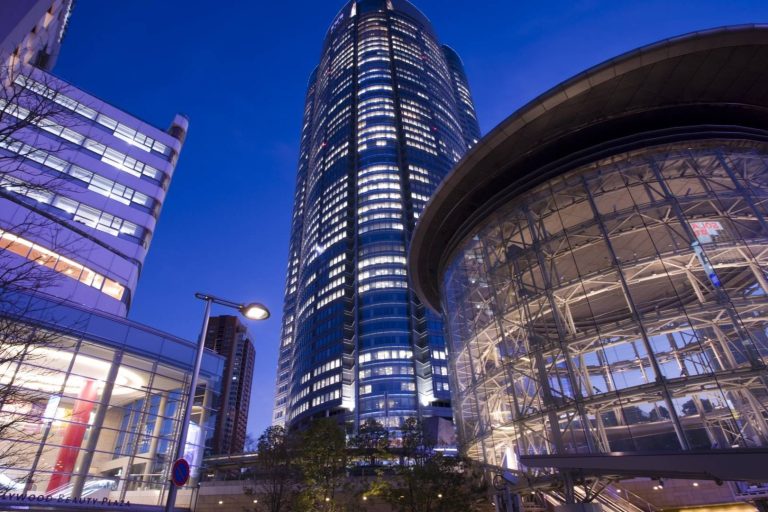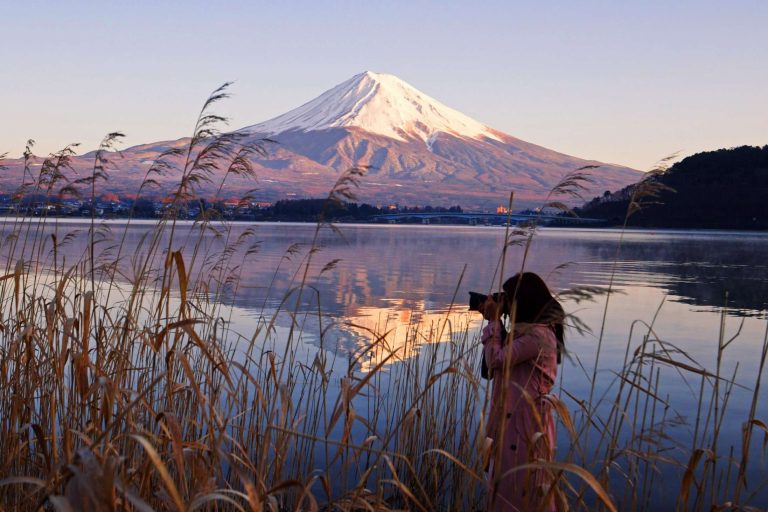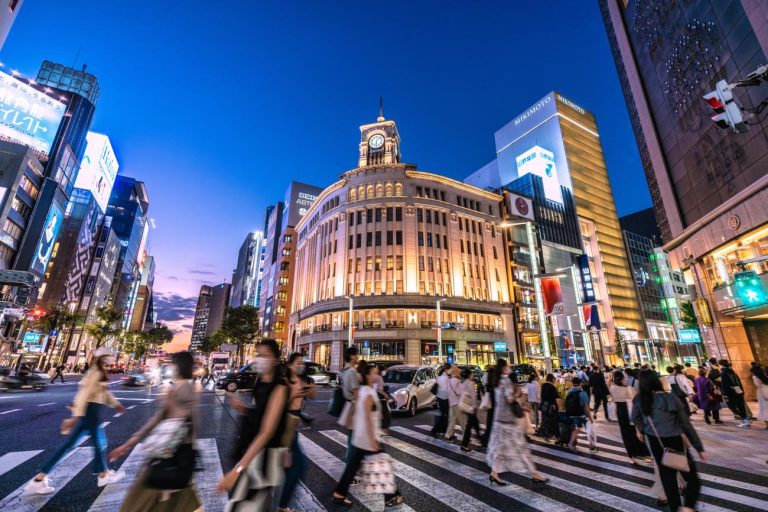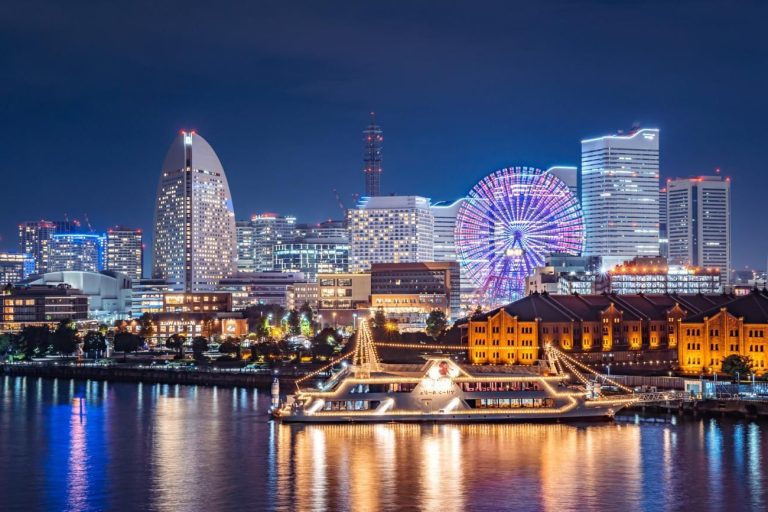Introduction to Kichijoji
Nestled in western Tokyo, Kichijoji stands out as one of the city’s most beloved neighborhoods, consistently ranking high on lists of desirable places to live. This charming district perfectly balances urban convenience with natural beauty, offering visitors a refreshing escape from the bustling city center. Unlike the neon-lit streets of central Tokyo, Kichijoji maintains a relaxed, residential atmosphere that feels both authentic and welcoming.
The area’s appeal lies in its unique combination of attractions: from the sprawling greenery of Inokashira Park to the narrow alleys filled with cozy eateries and vintage shops. Whether you’re seeking a peaceful afternoon by the pond or an evening exploring local dining gems, Kichijoji delivers experiences that capture the essence of Tokyo living. The neighborhood’s tree-lined streets and friendly community vibe make it feel like a small town within the metropolis, attracting both locals and tourists who appreciate its unhurried pace and genuine character.
Exploring Inokashira Park
Inokashira Park serves as Kichijoji’s crown jewel, spanning over 43 hectares of carefully maintained green space that provides a natural sanctuary in the heart of Tokyo. This beloved park has been welcoming visitors since 1917, evolving into one of the city’s most cherished recreational areas. The park’s central pond creates a focal point that draws people throughout the year, offering different seasonal experiences that keep locals and tourists returning time and again.
The park’s design seamlessly blends Japanese landscaping principles with practical recreational facilities, creating spaces where families can picnic, couples can stroll, and individuals can find quiet corners for reflection. Walking paths wind through various sections of the park, each offering different perspectives and experiences. The mature trees provide welcome shade during summer months, while open areas allow for various activities and events throughout the year.
Natural Scenery and Cherry Blossoms
Spring transforms Inokashira Park into one of Tokyo’s premier cherry blossom viewing destinations, with over 400 sakura trees creating a pink canopy that attracts thousands of visitors. The blooming period, typically lasting from late March to early May, turns the park into a natural amphitheater where hanami parties celebrate the fleeting beauty of the blossoms. The reflection of cherry blossoms in the pond’s still waters creates picture-perfect moments that photographers and nature lovers treasure.
Beyond spring’s spectacular display, the park offers year-round natural beauty with seasonal changes that highlight different aspects of the landscape. Summer brings lush green foliage and the gentle sound of cicadas, while autumn paints the trees in brilliant reds and golds.
Boat Rides and Swan Boats
The park’s central pond offers visitors the chance to experience the scenery from a unique perspective through traditional rowboat and swan boat rentals. These colorful boats, available for hourly rental, provide an intimate way to explore the pond while enjoying close-up views of the surrounding landscape. Couples often choose the romantic swan boats for leisurely rides, while families prefer the more practical rowboats that accommodate larger groups.
Operating from morning until late afternoon, the boat rental service has become an integral part of the Inokashira Park experience. The gentle exercise of rowing combined with the peaceful water setting creates a meditative activity that contrasts beautifully with Tokyo’s typically fast-paced environment.
Seasonal Events and Festivals
Throughout the year, Inokashira Park hosts various festivals and events that celebrate both traditional Japanese culture and contemporary community life. The annual Inokashira Park Festival brings together local performers, food vendors, and artisans, creating a vibrant celebration that showcases the neighborhood’s creative spirit. During cherry blossom season, the park becomes the backdrop for countless hanami gatherings, from intimate family picnics to large corporate celebrations.
Summer evenings often feature outdoor concerts and cultural performances, taking advantage of the park’s natural amphitheater setting. These events strengthen community bonds while providing entertainment that appeals to all ages and interests.
Wildlife and Photography Opportunities
The park’s diverse ecosystem supports various bird species, making it a popular destination for birdwatchers and nature photographers. Ducks, swans, and herons call the pond home, while the surrounding trees shelter smaller songbirds that add their voices to the park’s natural soundtrack. Early morning visits often reward photographers with opportunities to capture wildlife in golden light, creating stunning images that showcase Tokyo’s natural side.
The changing seasons provide endless photographic inspiration, from frost-covered branches in winter to the vibrant colors of autumn leaves reflected in the pond’s surface.
Dining Options in Kichijoji
Kichijoji’s culinary scene reflects the neighborhood’s diverse character, offering everything from traditional Japanese comfort food to international cuisine in settings that range from tiny counter-only establishments to spacious family restaurants. The area’s reputation for excellent dining draws food enthusiasts from across Tokyo, who come seeking authentic flavors and unique dining experiences that can’t be found in more touristy districts.
The neighborhood’s restaurants often occupy converted residential buildings or narrow spaces that create intimate dining atmospheres. This architectural constraint has fostered creativity among local chefs and restaurant owners, resulting in establishments that maximize flavor and experience within minimal square footage. Many of these venues have been family-owned for generations, maintaining recipes and traditions that give Kichijoji its distinctive culinary identity.
Yakitori at Iseya
Iseya stands as one of Kichijoji’s most legendary dining establishments, serving exceptional yakitori since 1928 in a setting that has remained largely unchanged for decades. This traditional yakitori shop occupies a narrow space where the grill master works behind a small counter, preparing skewered chicken over charcoal with techniques passed down through generations. The restaurant’s authentic atmosphere, complete with wooden stools and paper lanterns, transports diners to an earlier era of Tokyo dining.
The menu focuses on various cuts of chicken, each grilled to perfection and seasoned with either salt or the restaurant’s secret tare sauce. Regular customers often arrive early to secure seats at the counter, where they can watch the skilled preparation process while enjoying cold beer and perfectly grilled yakitori.
Menchikatsu at Kichijoji Sato
Kichijoji Sato has earned a devoted following for its exceptional menchikatsu, deep-fried ground meat cutlets that represent the pinnacle of Japanese comfort food. The restaurant’s approach to this beloved dish involves careful selection of high-quality ground beef and pork, mixed with onions and seasonings before being coated in panko breadcrumbs and fried to golden perfection. Each cutlet emerges from the oil with a crispy exterior that gives way to juicy, flavorful meat.
The restaurant’s commitment to quality extends to every aspect of the dining experience, from the freshly shredded cabbage that accompanies each order to the homemade tonkatsu sauce that perfectly complements the rich flavors of the menchikatsu.
Udon at Ibuki Udon
Ibuki Udon offers a quick yet satisfying dining experience centered around freshly made udon noodles that showcase the art of Japanese noodle-making. The restaurant’s open kitchen allows diners to observe the preparation process, from rolling and cutting the thick wheat noodles to ladling the carefully prepared broths that form the foundation of each bowl. The menu features both hot and cold udon preparations, allowing guests to choose based on season and personal preference.
The restaurant’s efficient service and reasonable prices make it popular with local workers seeking a quick lunch, while the quality of the noodles and broths attracts serious udon enthusiasts who appreciate authentic preparation methods.
Okinawan Cuisine at Harmonica Quina
Harmonica Quina brings the tropical flavors of Okinawa to Kichijoji, offering a unique dining experience that transports guests to Japan’s southernmost prefecture. The restaurant specializes in traditional Okinawan dishes that reflect the island’s distinct culinary heritage, including goya champuru (bitter melon stir-fry), Okinawan-style pork dishes, and the prefecture’s famous awamori spirit. The warm, island-inspired atmosphere creates a relaxed setting that perfectly complements the bold, tropical flavors.
The restaurant’s commitment to authenticity extends to sourcing specialty ingredients directly from Okinawa, ensuring that each dish delivers the genuine taste of the islands to Tokyo diners seeking something different from typical Japanese cuisine.
Flaming Shaved Ice Desserts at Cafe Lumiere
Cafe Lumiere has gained attention for its spectacular flaming shaved ice desserts that combine visual drama with refreshing flavors. These theatrical treats arrive at the table with flames dancing across the surface, created by carefully applied spirits that burn off to leave behind subtle flavor enhancements. The base of finely shaved ice provides the perfect canvas for various syrups, fruits, and toppings that create both beautiful presentations and delicious combinations.
Beyond the famous flaming desserts, the cafe offers a full menu of coffee drinks, light meals, and other desserts in a cozy atmosphere that encourages lingering conversations and relaxation.
Shopping in Kichijoji
Kichijoji’s shopping scene perfectly reflects the neighborhood’s eclectic character, offering a mix of traditional shopping arcades, modern department stores, and unique specialty shops that cater to diverse tastes and budgets. Unlike the high-end boutiques found in areas like Ginza luxury shopping and dining districts, Kichijoji’s retail landscape emphasizes accessibility and authenticity, with many shops owned by local families who have served the community for generations.
The area’s shopping districts each possess distinct personalities, from the bustling energy of covered arcades to the quiet charm of narrow side streets lined with vintage stores and artisan workshops. This variety ensures that visitors can find everything from everyday necessities to unique treasures that serve as perfect souvenirs or personal discoveries.
Harmonica Alley: A Lively Shopping Street
Harmonica Alley earned its musical name from the narrow passages between tiny shops and restaurants that create a harmonica-like appearance when viewed from above. This compact area packs an incredible variety of establishments into a small footprint, with each narrow storefront offering something different. The alley’s unique architecture, created by post-war reconstruction efforts, has become one of Kichijoji’s most photographed and beloved features.
During evening hours, the alley transforms into a vibrant dining and drinking destination as small bars and restaurants open their doors to reveal cozy interiors filled with locals and visitors seeking authentic experiences.
Sunroad Shopping Arcade
Sunroad Shopping Arcade provides covered shopping convenience with a diverse mix of retailers that serve both daily needs and special interests. The arcade’s protected environment makes it popular during rainy weather, while the variety of shops ensures that visitors can accomplish multiple shopping goals in one location. From clothing boutiques to specialty food stores, the arcade represents the practical side of Kichijoji’s retail offerings.
The arcade’s central location makes it a natural gathering place where shopping, dining, and social activities intersect, creating a community hub that reflects the neighborhood’s friendly character.
Department Stores and Specialty Shops
Kichijoji’s department stores offer comprehensive shopping experiences with carefully curated selections that reflect local tastes and preferences. These larger retailers complement the area’s smaller specialty shops, providing everything from fashion and cosmetics to home goods and electronics. The department stores often feature seasonal displays and limited-time events that showcase both Japanese and international brands.
Specialty shops throughout the neighborhood focus on specific interests or hobbies, creating destinations for enthusiasts seeking particular items or expertise that can’t be found in larger retail establishments.
Vintage Shops and Local Markets
The neighborhood’s vintage shop scene attracts treasure hunters searching for unique clothing, accessories, and collectibles from past decades. These carefully curated stores offer everything from designer vintage pieces to quirky finds that reflect different eras of Japanese fashion and culture. Unlike the trendy vintage shops and music venues found in areas like Shimokitazawa vintage shops and music districts, Kichijoji’s vintage retailers tend to focus on quality and authenticity rather than current fashion trends.
Local markets and small independent retailers add to the neighborhood’s charm by offering handmade goods, local crafts, and specialty items that reflect the creativity and skills of local artisans.
Cultural Attractions
Kichijoji’s cultural landscape offers visitors opportunities to engage with both traditional and contemporary Japanese arts, from world-renowned museums to intimate galleries that showcase local talent. The neighborhood’s cultural attractions reflect its position as a creative community where artists, writers, and performers have long found inspiration and support. These venues provide experiences that range from internationally significant exhibitions to grassroots cultural events that celebrate local creativity.
The area’s cultural offerings complement its natural and commercial attractions, creating a well-rounded destination that appeals to visitors seeking intellectual and artistic stimulation alongside recreational activities.
The Ghibli Museum: Advance Ticketing Required
The Ghibli Museum stands as one of Japan’s most beloved cultural attractions, celebrating the artistry and imagination of Studio Ghibli’s animated films. Located within Inokashira Park, this unique museum requires advance ticket purchases through a reservation system that ensures manageable visitor numbers while maintaining the intimate experience that makes each visit special. The museum’s design reflects the whimsical aesthetic of Ghibli films, with curved walls, hidden passages, and magical details that delight visitors of all ages.
Exhibitions rotate regularly, ensuring that repeat visitors always find something new to discover. The museum’s exclusive short films, available only to museum visitors, provide additional incentive for animation fans to plan their visits carefully.
Cat Cafe Temari No O-uchi
Cat Cafe Temari No O-uchi offers a unique cultural experience that reflects Japan’s innovative approach to combining hospitality with animal therapy. This cozy establishment allows visitors to enjoy beverages and light snacks while interacting with friendly cats in a carefully designed environment that prioritizes both human comfort and feline welfare. The cafe’s approach to cat care and customer service has made it a model for similar establishments throughout Japan.
The relaxing atmosphere and gentle interactions with the resident cats provide a therapeutic experience that appeals to both cat lovers and those seeking stress relief from urban life.
Art Galleries and Local Exhibitions
Kichijoji’s art scene includes several galleries that showcase both established and emerging artists, providing platforms for creative expression that might not find space in larger, more commercial venues. These intimate galleries often feature rotating exhibitions that highlight different artistic movements, techniques, or themes, creating ongoing opportunities for cultural engagement and discovery.
Local exhibitions frequently celebrate community artists and craftspeople, strengthening connections between residents and fostering appreciation for the creative talent that calls Kichijoji home.
Relaxed Atmosphere of Kichijoji
The neighborhood’s relaxed atmosphere sets it apart from Tokyo’s more frenetic districts, creating an environment where visitors can slow down and appreciate the subtler pleasures of urban life. This unhurried pace reflects the area’s residential character and the priorities of its residents, who have cultivated a community that values quality of life alongside urban convenience. The atmosphere encourages exploration at a comfortable pace, allowing visitors to discover hidden details and unexpected pleasures that might be missed in more hurried tourist destinations.
Kichijoji’s relaxed vibe extends to its businesses, public spaces, and social interactions, creating an overall experience that feels welcoming and authentic rather than performative or commercialized.
Parks and Open Spaces
Beyond Inokashira Park, Kichijoji features numerous smaller parks and open spaces that contribute to the neighborhood’s green character and provide gathering places for community activities. These pocket parks often feature playground equipment for children, benches for quiet contemplation, and open areas suitable for various recreational activities. The abundance of green space helps maintain air quality and provides natural cooling during hot summer months.
These smaller parks serve as important community hubs where neighbors meet, children play, and local events take place, strengthening social bonds that contribute to the area’s friendly atmosphere.
Community Events and Festivals
Throughout the year, Kichijoji hosts various community events and festivals that bring residents and visitors together in celebration of seasonal changes, cultural traditions, and local achievements. These gatherings often take place in parks and public spaces, creating opportunities for people to connect with their neighbors and participate in shared experiences that strengthen community bonds.
Local festivals typically feature food vendors, traditional performances, and activities for children, creating inclusive events that welcome participation from people of all ages and backgrounds.
Family-Friendly Activities
The neighborhood’s family-friendly character makes it an ideal destination for visitors traveling with children, offering activities and attractions that appeal to different age groups while maintaining safety and accessibility. Playgrounds, family restaurants with children’s menus, and shops selling toys and games create an environment where families can spend entire days exploring without worry.
Many local businesses actively welcome families, providing high chairs, changing facilities, and other amenities that make dining and shopping more convenient for parents with young children.
Local Cafés and Eateries
Kichijoji’s café culture reflects the neighborhood’s artistic sensibilities and relaxed pace, with establishments that prioritize atmosphere and quality over speed and efficiency. These cafés serve as community gathering places where locals meet friends, students study, and visitors can observe daily life while enjoying carefully prepared beverages and light meals. The café scene includes everything from tiny counter-only establishments to spacious venues with comfortable seating areas designed for extended stays.
Many of these cafés roast their own coffee beans or source them from specialty suppliers, ensuring that each cup meets the high standards expected by discerning local customers who have made coffee appreciation an integral part of their daily routines.
Hidden Gems in the Café Scene
Kichijoji’s narrow streets and converted residential buildings house numerous hidden cafés that reward curious visitors willing to venture beyond the main thoroughfares. These intimate establishments often occupy spaces that were never intended for commercial use, resulting in unique layouts and atmospheres that can’t be replicated in purpose-built restaurants. The owners of these hidden gems typically focus on specific aspects of café culture, whether it’s exceptional coffee, homemade pastries, or creating environments conducive to reading and conversation.
Discovering these hidden cafés often requires local knowledge or careful exploration, making each find feel like a personal discovery that adds to the neighborhood’s appeal.
Seasonal Menus and Specials
Local cafés embrace seasonal ingredients and themes, regularly updating their menus to reflect the changing availability of fresh produce and the evolving preferences of their regular customers. Spring menus might feature cherry blossom-themed drinks and desserts, while summer offerings focus on refreshing cold beverages and light meals. This seasonal approach keeps the café experience fresh and provides regular customers with reasons to return throughout the year.
Seasonal specials often incorporate local ingredients or traditional Japanese flavors adapted for contemporary café culture, creating unique offerings that reflect both global coffee trends and local tastes.
Café Culture in Kichijoji
The neighborhood’s café culture emphasizes quality, community, and creativity over commercial efficiency, resulting in establishments that feel more like extensions of their owners’ homes than typical businesses. This approach creates environments where customers feel welcome to linger, whether they’re working on laptops, meeting friends, or simply enjoying quiet moments with their beverages. The personal touch evident in these cafés contributes significantly to Kichijoji’s reputation as a neighborhood that prioritizes quality of life.
Many café owners actively participate in community events and support local artists by displaying their work or hosting small exhibitions, further strengthening the connections between business and community that make Kichijoji special.
Visiting Kichijoji
Planning a visit to Kichijoji requires consideration of transportation options, timing, and practical details that can enhance the overall experience. The neighborhood’s popularity among both locals and tourists means that certain times and locations can become crowded, while other periods offer more relaxed exploration opportunities. Understanding these patterns helps visitors make the most of their time while avoiding unnecessary stress or disappointment.
Successful visits often combine advance planning for specific attractions with flexibility for spontaneous discoveries, allowing visitors to experience both the neighborhood’s famous highlights and its hidden treasures.
Getting There: Transportation Options
Kichijoji enjoys excellent transportation connections that make it easily accessible from anywhere in the Tokyo metropolitan area. The JR Chuo Line provides direct service from central Tokyo stations, while the Keio Inokashira Line offers convenient connections to Shibuya nightlife and shopping districts and other popular destinations. Both train lines converge at Kichijoji Station, which serves as the neighborhood’s primary transportation hub and starting point for most visits.
The station’s multiple exits provide access to different parts of the neighborhood, with clear signage helping visitors orient themselves and choose the most convenient route to their intended destinations.
Best Times to Visit
Timing visits to Kichijoji can significantly impact the experience, with different seasons and times of day offering distinct advantages. Spring brings cherry blossom season but also large crowds, while autumn provides beautiful foliage with more manageable visitor numbers. Weekday visits typically offer a more relaxed experience, allowing visitors to interact more easily with local shopkeepers and café owners who have more time for conversation during quieter periods.
Early morning visits to Inokashira Park provide opportunities for peaceful walks and wildlife observation before the area becomes busy with families and tourists.
Safety and Travel Tips
Kichijoji maintains the high safety standards typical of Tokyo neighborhoods, with well-lit streets, helpful local residents, and reliable public transportation that operates until late evening. Visitors should carry cash for smaller establishments that may not accept credit cards, and learning basic Japanese phrases for ordering food and asking directions can enhance interactions with local business owners. The neighborhood’s compact size makes it easy to explore on foot, though comfortable walking shoes are recommended for extended exploration.
Frequently Asked Questions
What are the main attractions in Kichijoji?
The main attractions include Inokashira Park, the Ghibli Museum, various dining options, shopping streets like Harmonica Alley, and cultural events.
How can I get to Kichijoji?
Kichijoji is easily accessible via the JR Chuo Line and the Keio Inokashira Line, both of which serve Kichijoji Station.
What is Inokashira Park known for?
Inokashira Park is known for its beautiful landscapes, cherry blossoms, boat rentals, and various seasonal events and festivals.
What dining options are available in Kichijoji?
Kichijoji offers a range of dining options, from traditional yakitori and menchikatsu to unique cafes and Okinawan cuisine.
Is Kichijoji family-friendly?
Yes, Kichijoji is family-friendly with many parks, dining establishments, and activities suitable for children.
Discovering the Essence of Kichijoji
Kichijoji stands as a testament to the charm of urban life harmoniously intertwined with nature, offering a unique experience that captivates visitors. From its serene parks to its lively cafés and rich cultural venues, this neighborhood invites exploration and connection, making every visit a memorable journey.
